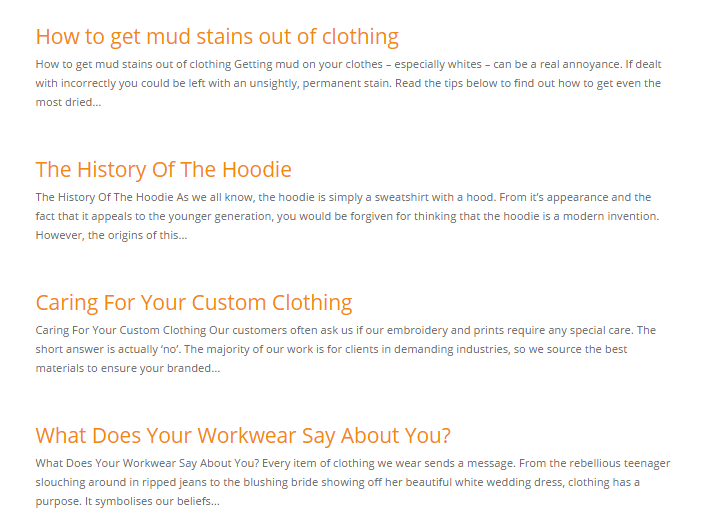Social media influence has grown significantly in the last few years, and with it the chance for business-to-business companies to reach out to existing followers and potential new customers. But despite the rise in average marketing budget allowance for social media, many B2B marketers are still not happy with how their B2B social strategies are performing. So how can you engage future buyers over social networks? These tips are designed to help you maximize the return on your social marketing efforts in 2017.

Patrick Foster
Invest more time in LinkedIn
If you’re a B2B business and you’re not making use of LinkedIn, now is the time to start. You should create a company page for your business, as well as having separate personal accounts. LinkedIn has really improved in the last couple of years, and one of the most important changes is that now anyone can publish content—not just “influencers.” If you do nothing else on social media, take the time to post and comment on LinkedIn, and become an influencer yourself. B2B marketers can’t afford to ignore LinkedIn—it’s currently responsible for around 80 percent of all B2B social media leads.
- Commenting in LinkedIn Groups is a good way to put yourself in the way of existing marketing communities and to get your voice heard. The key is to be genuinely helpful, and to avoid spam selling, as the Group community will be wise to it. It’s free to post in LinkedIn Groups, though you have to comment as a user rather than a company.
- If you have a loyal following, create your own LinkedIn Group. You will be able to position yourself as an expert—but you must commit to updating and managing the group regularly.
- Publish articles that demonstrate your business knowledge, and share them. This is a good way to position yourself as an industry authority—and when potential customers are on the lookout, they are more likely to find you and trust you.
Keep a watch on your industry
Social media is a great way to keep an eye on the trends that are shaping your industry. Never before has there been such a unique opportunity to gather intelligence about customer behavior and buying patterns. Tools like Google Alerts are a useful way to keep tabs on new information regarding your industry, your company and your competitors—alerts can be created for anything. You can also use RSS and industry newsletter digests to stay informed.
When it comes to monitoring the social world in particular, tools like Social Mention and BackType will scour the web for any new mention of your business, even down to the comments written on blog posts. This is a great way to pick up any potential negative press before it has time to spread.
Consider setting up alerts for:
- Your name
- Your company name
- Your competitors
- Industry-related keywords
Watching your competitors can also help you to gauge how well you are doing in comparison, so you know whether you need to ramp up your marketing efforts, create a counter-campaign or make a competitive offer.
Let your employees become your advocates
B2B companies sometimes struggle to humanize their business, and this is where social media can help. By actively featuring your employees through updates, quotes, pictures and videos, you can demonstrate the value that you place on them, and in the process improve external perceptions of your company as a cheerful place to work. Several voices are better than one, when it comes to generating regular content and ideas.
It’s important to remember that your employees are (or should be) your company’s biggest fans. So why not give them the chance to express their views? Earned media such as this is often far more effective than paid forms of advertising—and you’re paying them already, so why not make the most of having them around? Find your company’s most vibrant voices—and let them do the talking.

As an example from the world of retail e-commerce, the online shoe and clothing store Zappos prides itself on its social culture, and they often share photos and videos of their employees using the hashtag #companyculture. What does your company culture look like, and how could it be shared?
Maximize use of video and images
There are innumerable studies that prove social media engagement is enhanced when you post a picture or video alongside your message. More video and imagery equals more clicks, likes and shares. This is a quick win—and one to start implementing today. Visually engaging, shareable content is where the real power of social media lies. After all, it can be a challenge to tell a story in 140 characters (or less).
Images and video can help to give a real insight into your company culture and make your customers feel more invested in you. There are so many avenues to explore: you can show off your company culture, host a Q&A or take part in viral social media challenges. All of this serves to keep you in the eyes (and minds) of your potential customers.
Show your content calendar some love
Let’s be clear, if you have nothing worthwhile to share, there is no point in your being on social media. As a business, you must surely have something to say. So what will you say—and who are you saying it to? This is where planning a content calendar can be helpful.
Whether you want to demonstrate your expertise on a subject, give an opinion about a new or ongoing industry trend, shed insight into your company culture or offer up a case study, these are all useful things that can (and should) be included in your company content calendar. Content can also be used to directly reach out to a prospective client, by deliberately creating a post you know they will find useful, and tagging them. Your content calendar is what makes you appear interesting and knowledgeable to passers-by—like maintaining good chat at a social gathering.
For an example of how to demonstrate expertise, look at Slant Riggs (in four notes illustrated below), a company that creates workplace clothing. It’s a small online business created using Shopify, and its content calendar is useful and informative. We get the impression that they really know their clothing—from its history, to how to care for it and keep it clean.

Once you’ve got a handle on creating great content, make sure it’s shareable. It’s the final step in the process, and could spell the difference between whether a user decides to share/retweet your work or not. Keep your sharing buttons clear and visible.
Keep it consistent
Lastly, once you’ve ramped up your B2B social media efforts, keep them consistent. Commit to posting a certain amount each week. It’s also okay to follow-up with potential opportunities, as long as you’re not too pushy. The key is communication—you shouldn’t just shout about your business and expect people to listen. Interact, provide value—and you could get a lot back.
These are just some of the ways that B2B marketers can make use of social media in 2017. Use these ideas as a starting point, and do some of your own research to find great strategies for your niche and audience. Which will you try first?
Patrick Foster is an e-commerce consultant and writer. He writes about digital, branding, marketing and sales topics on EcommerceTips.org. Follow him on Twitter @myecommercetips.
Photo Credit: HowToStartABlogOnline.net
Favorite